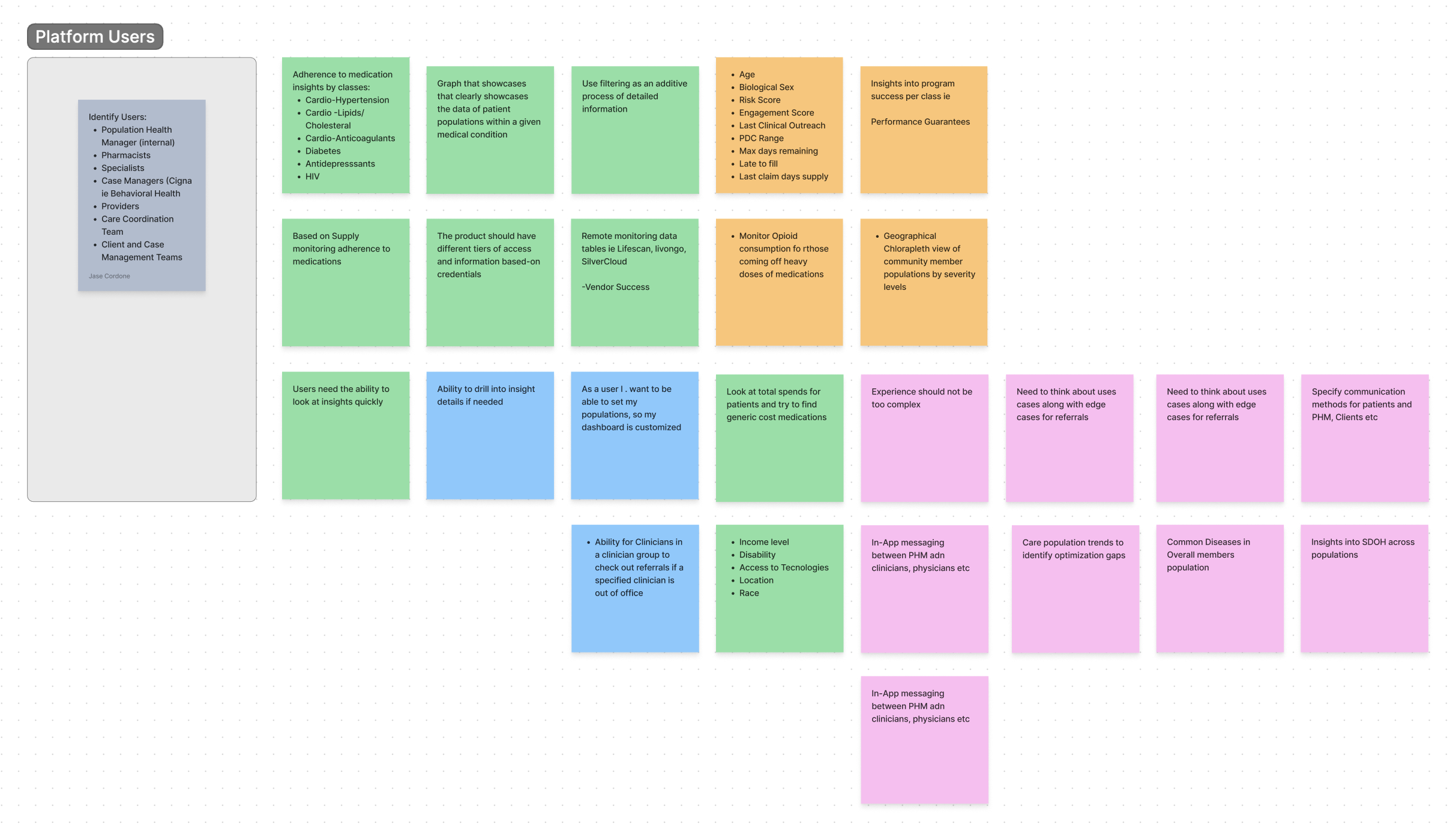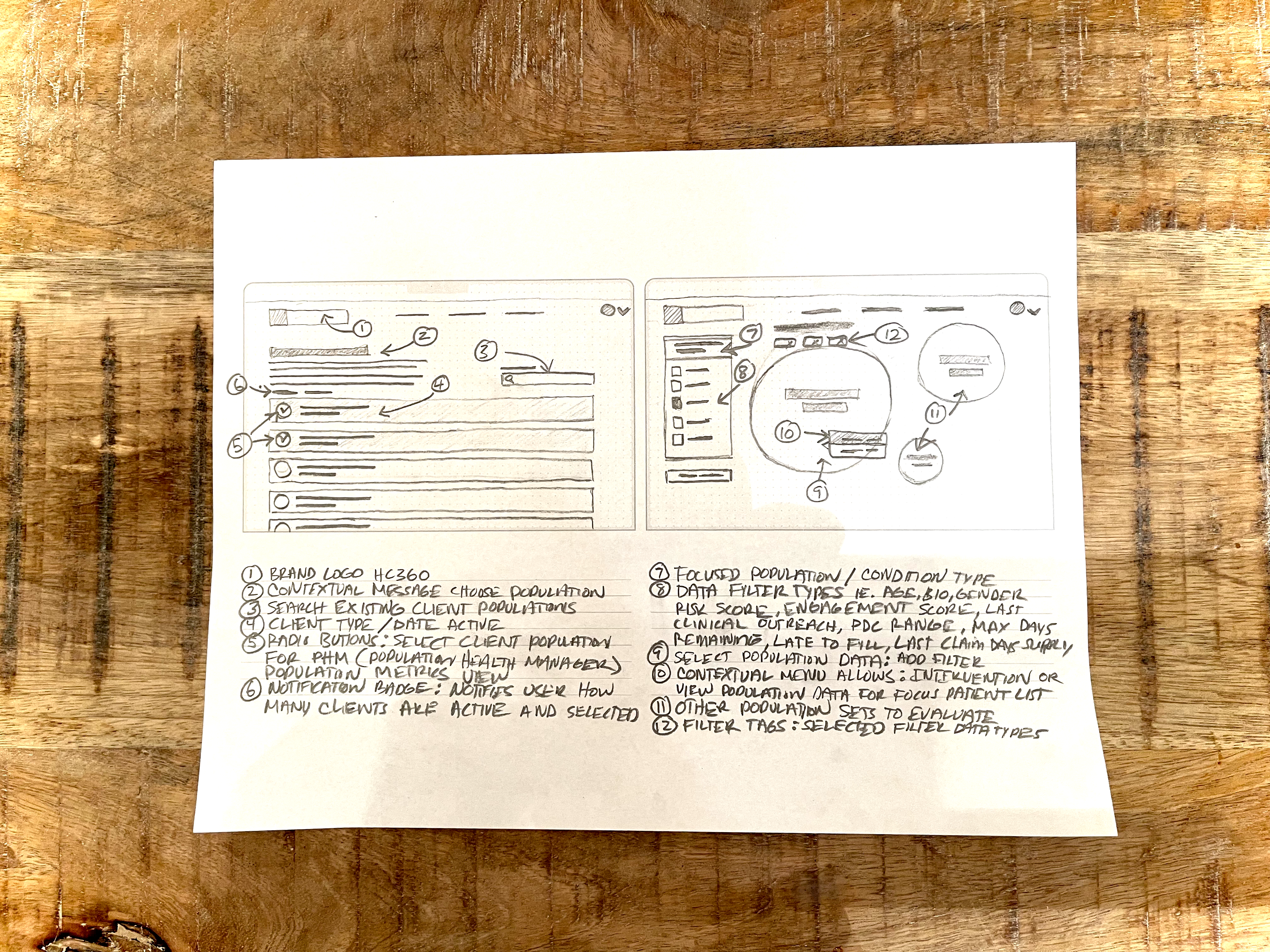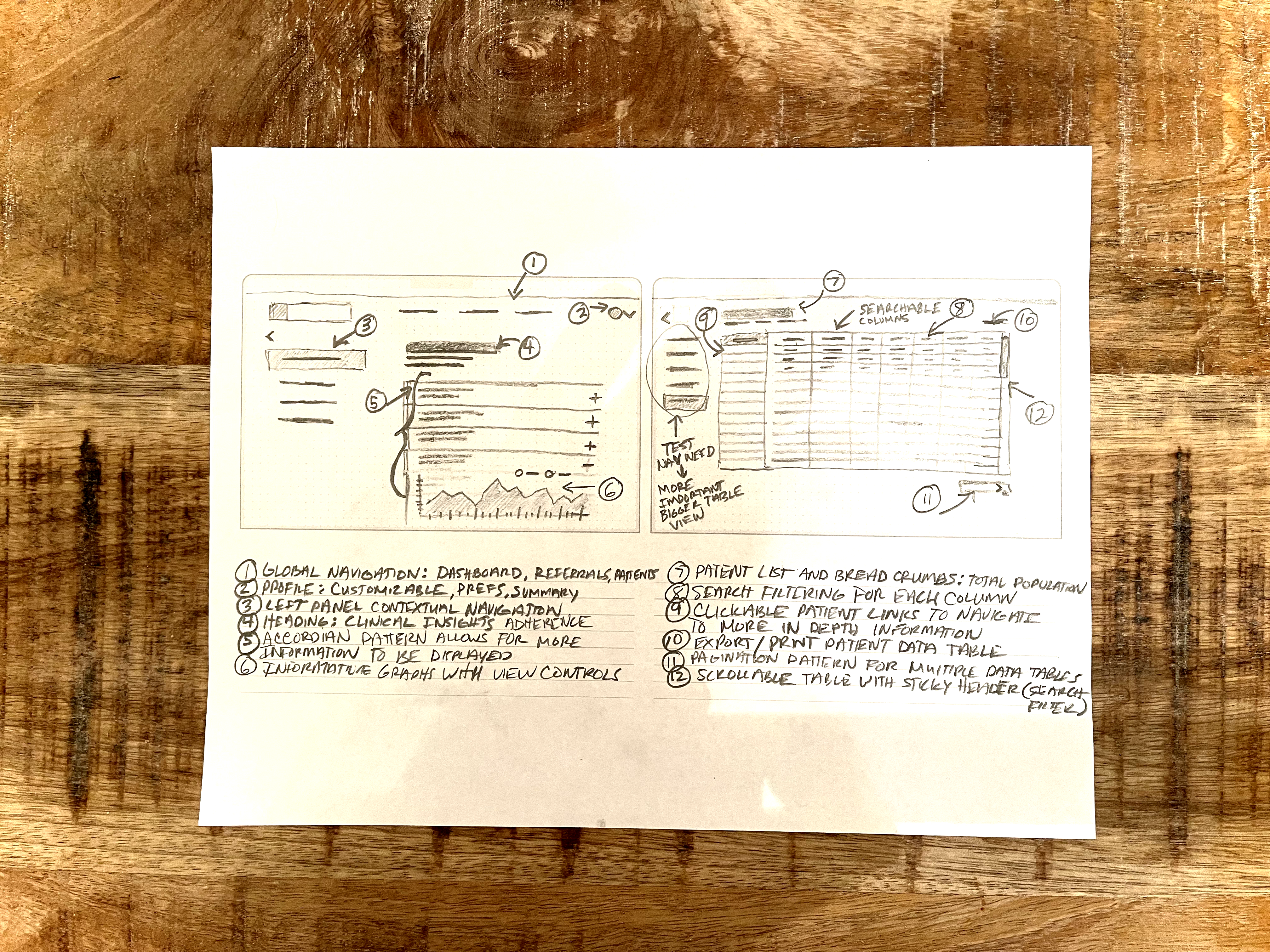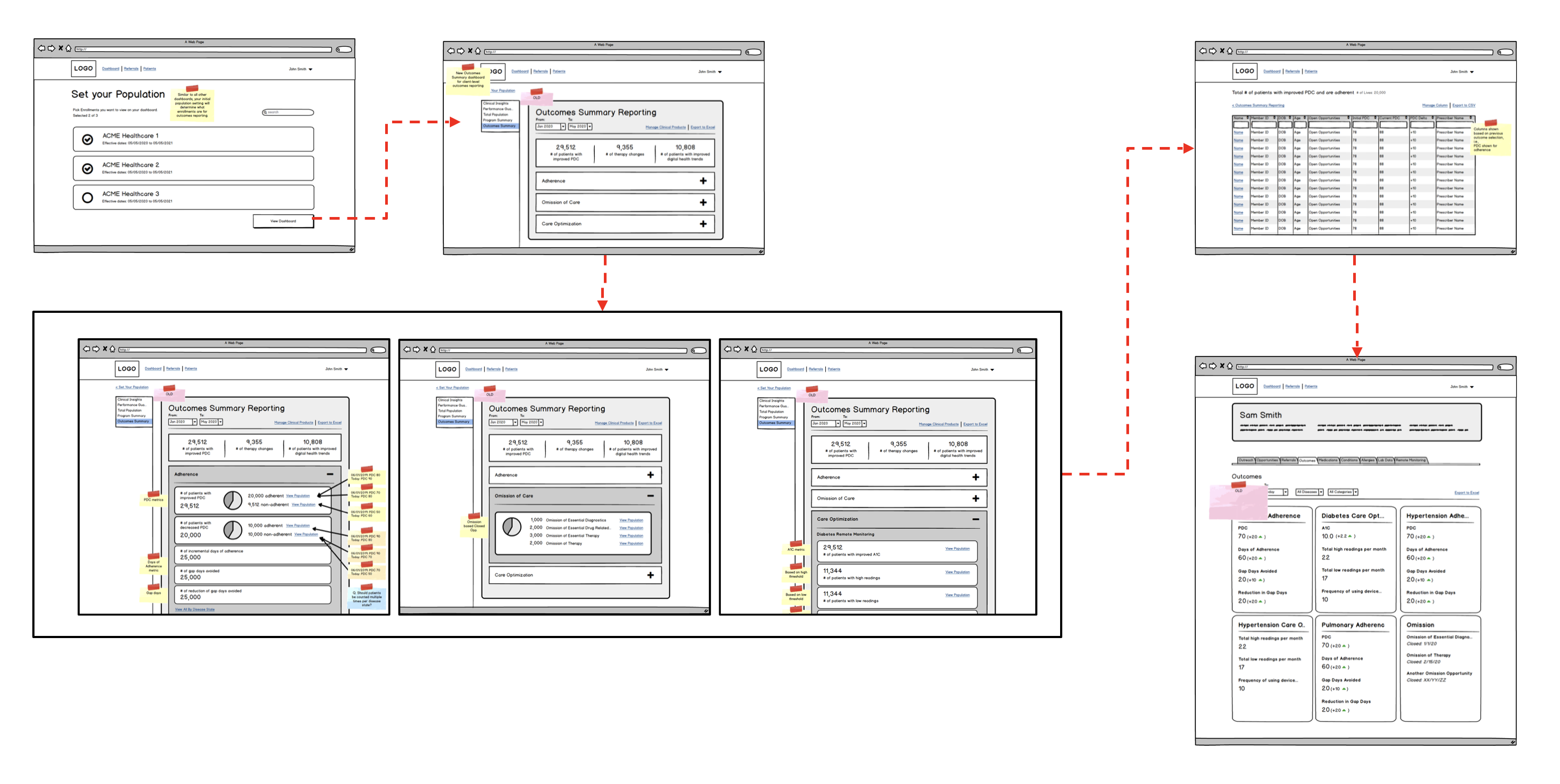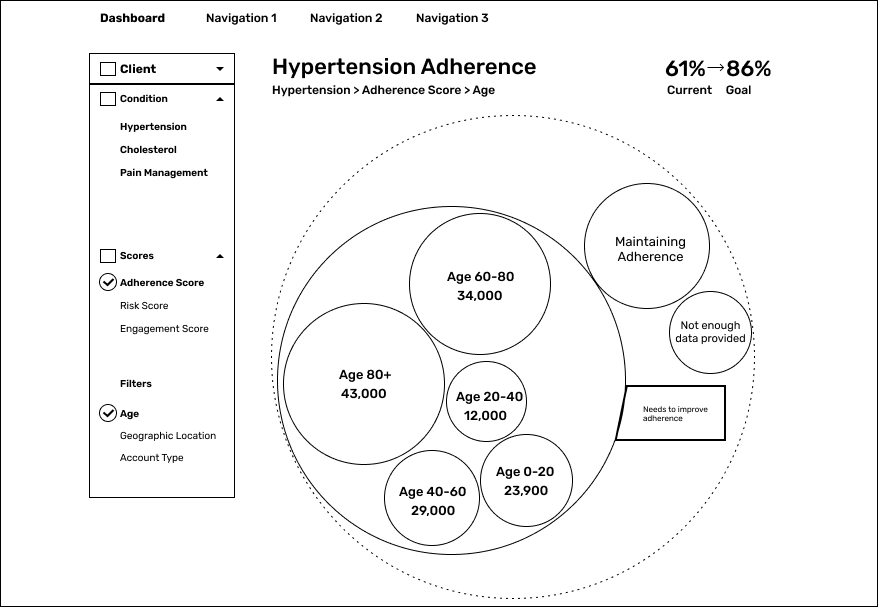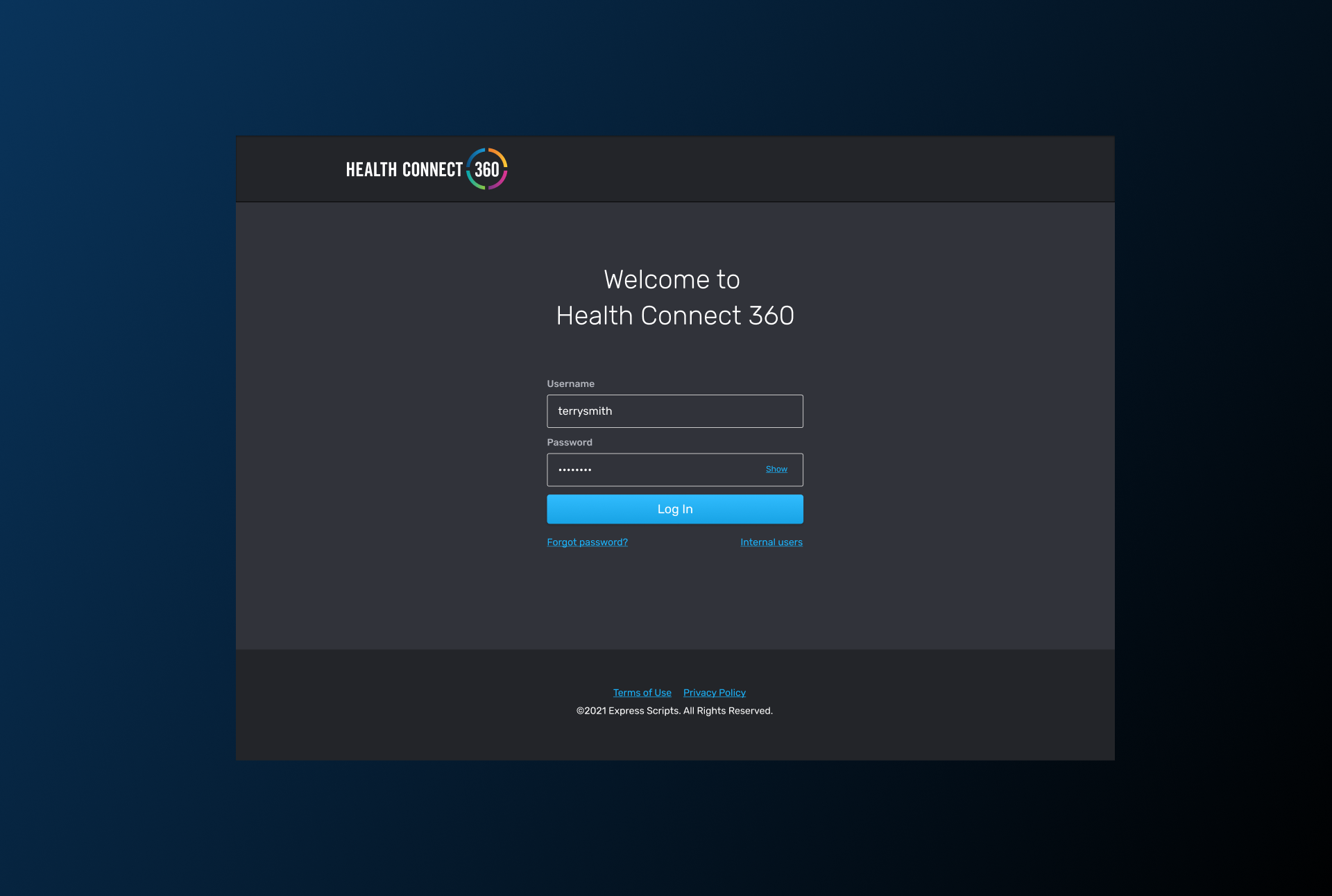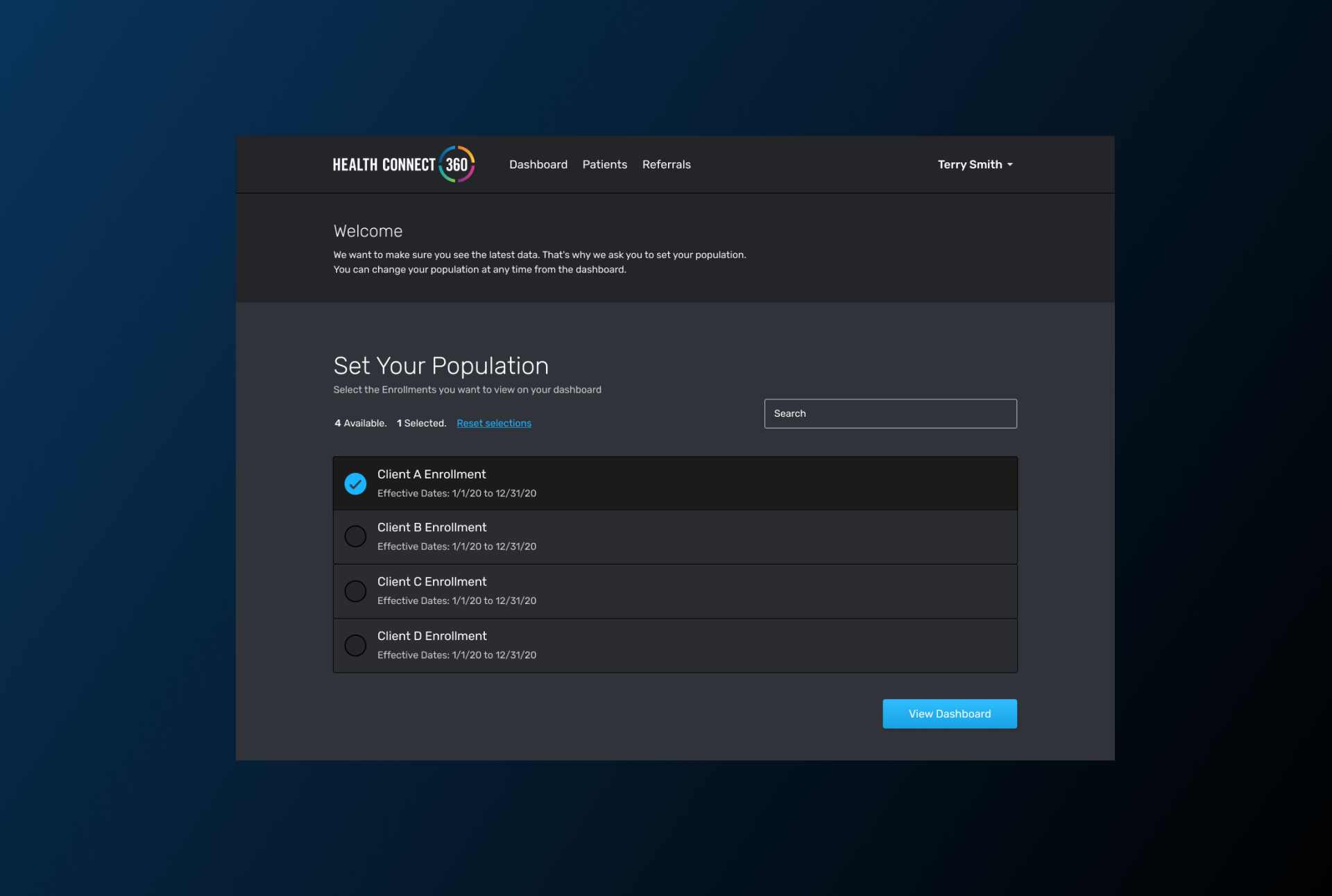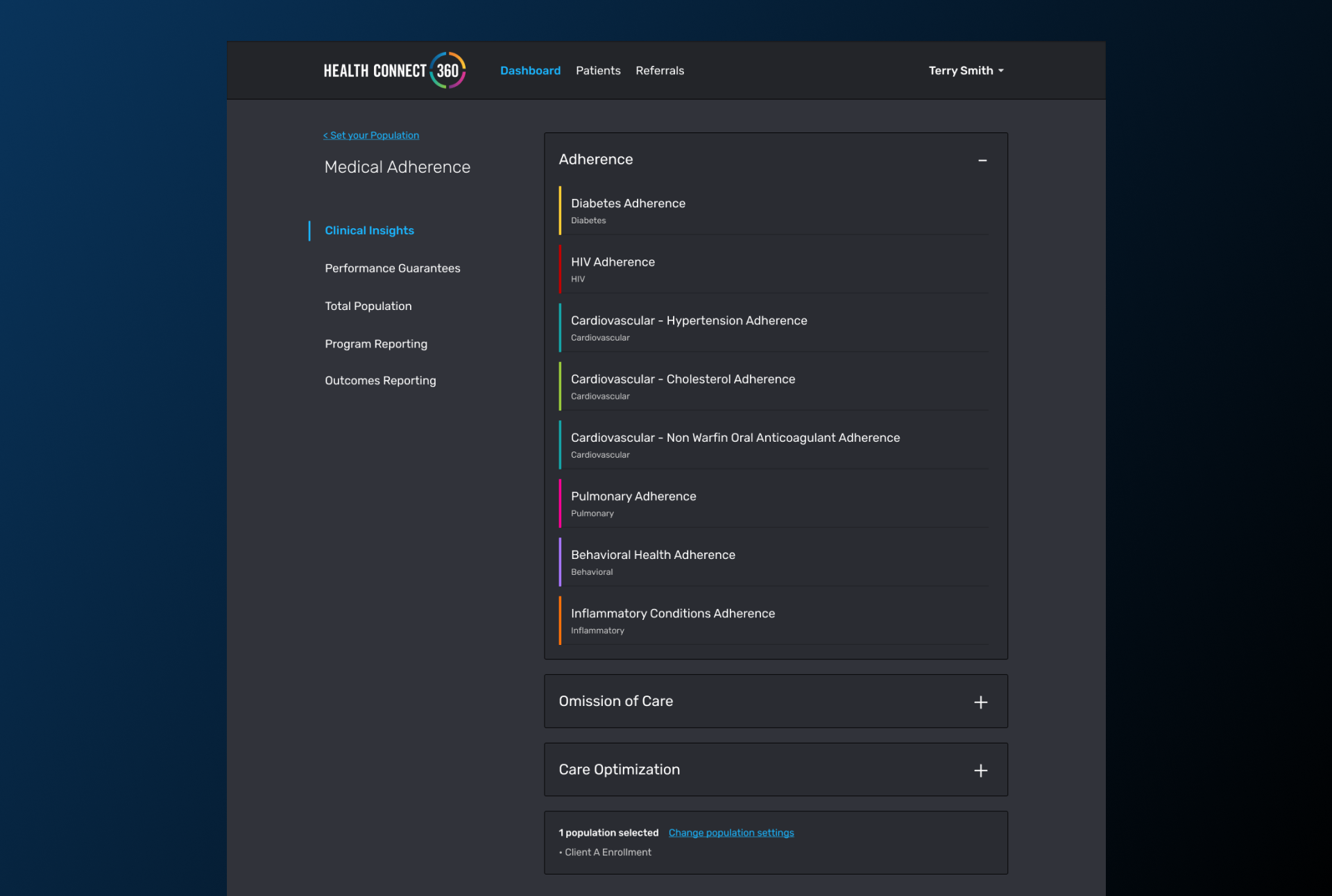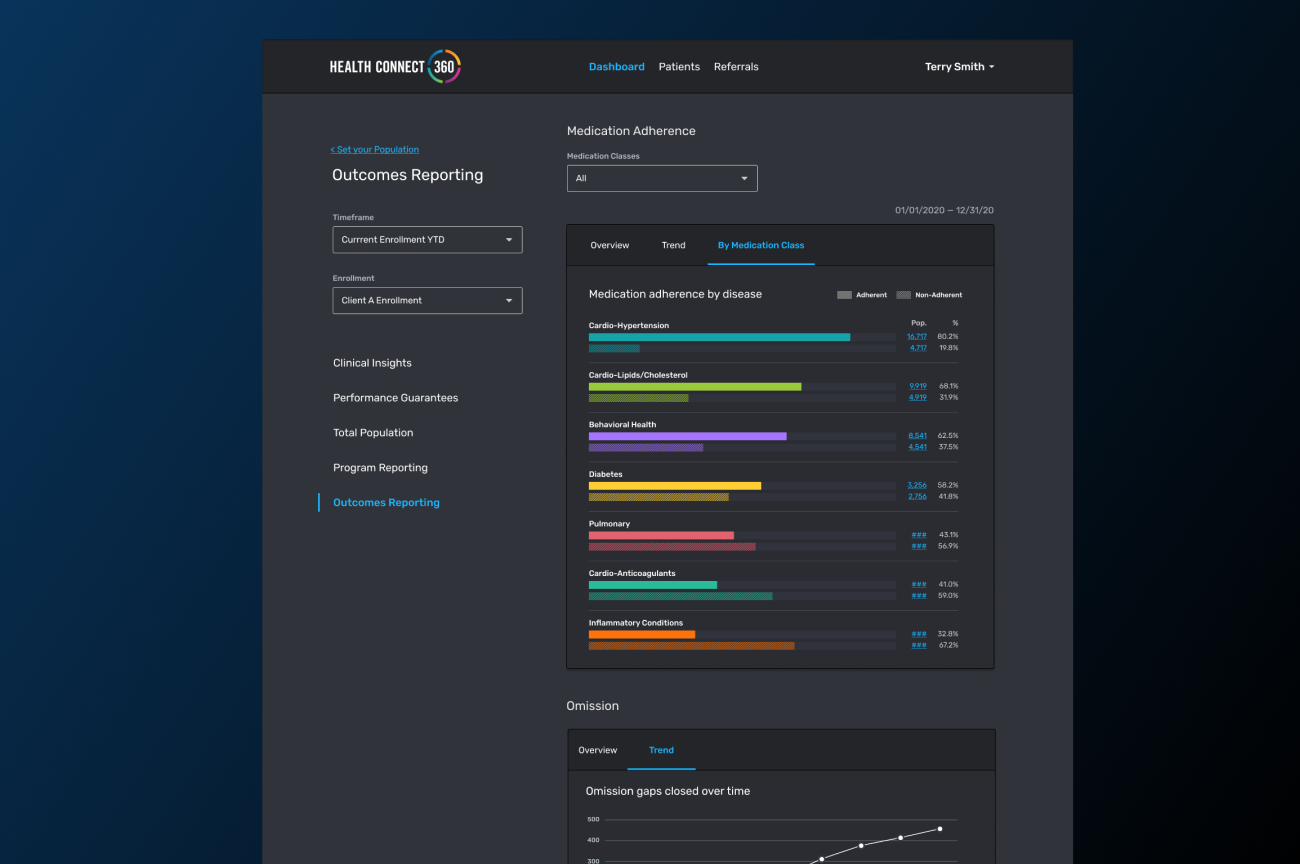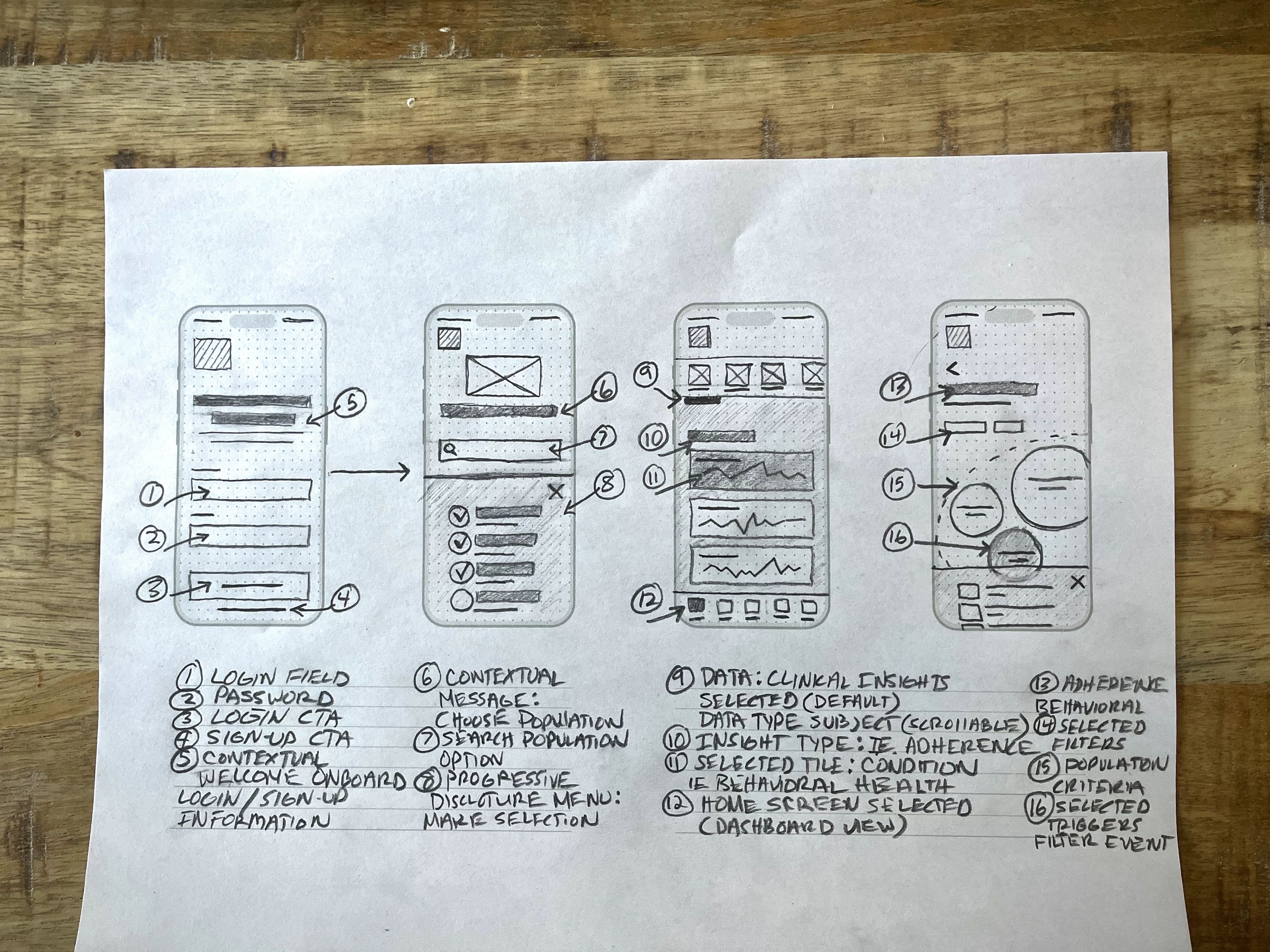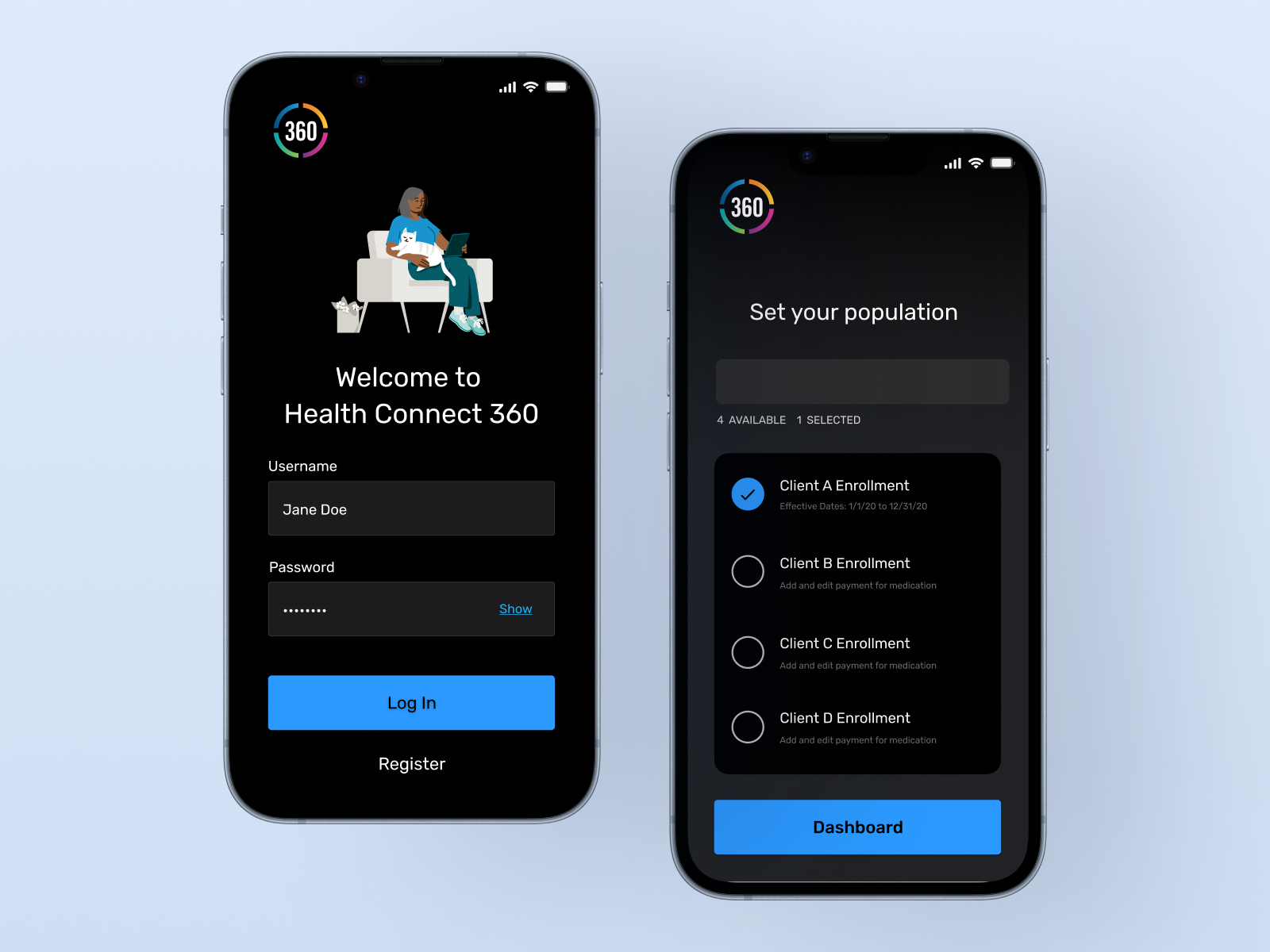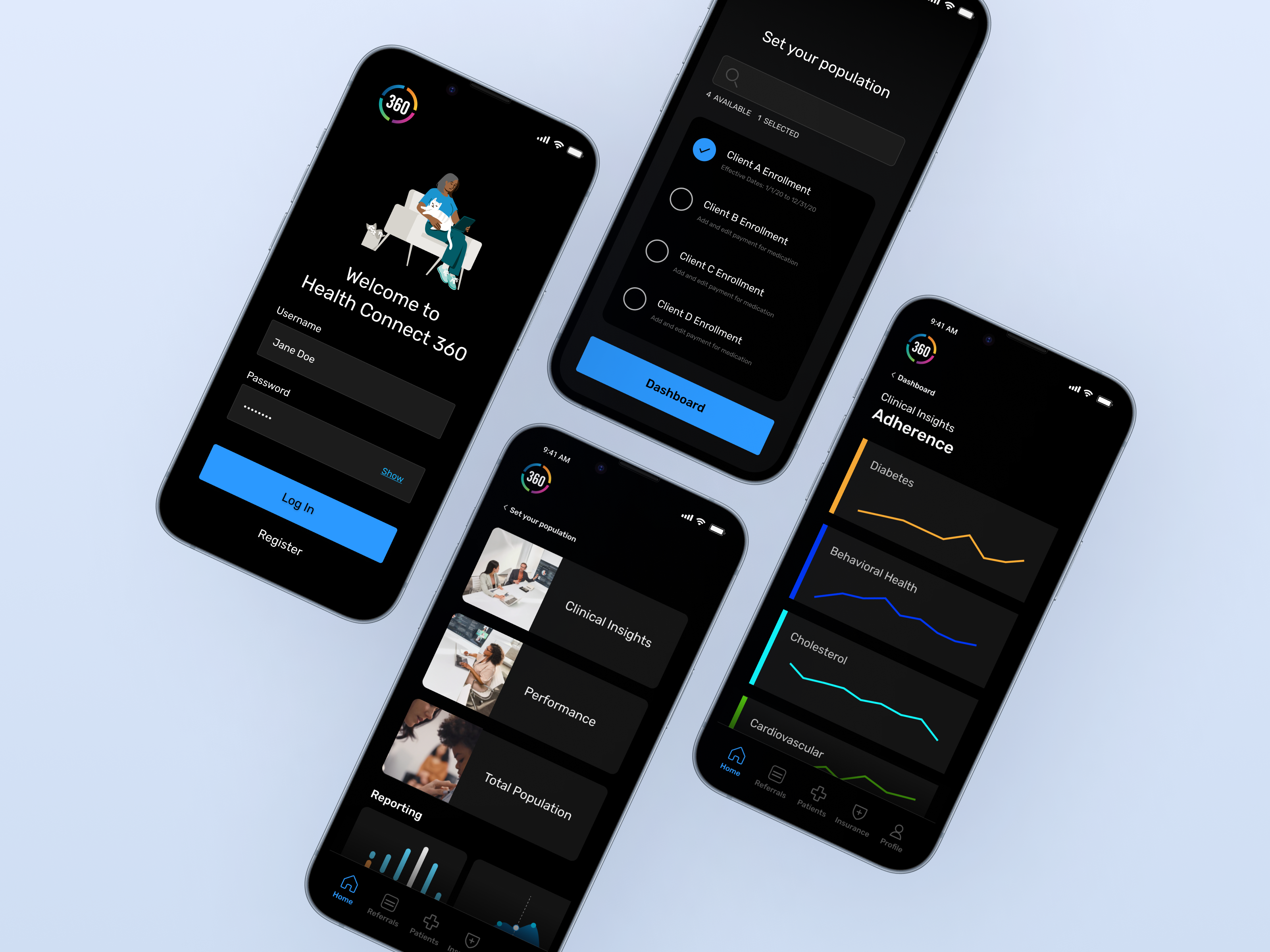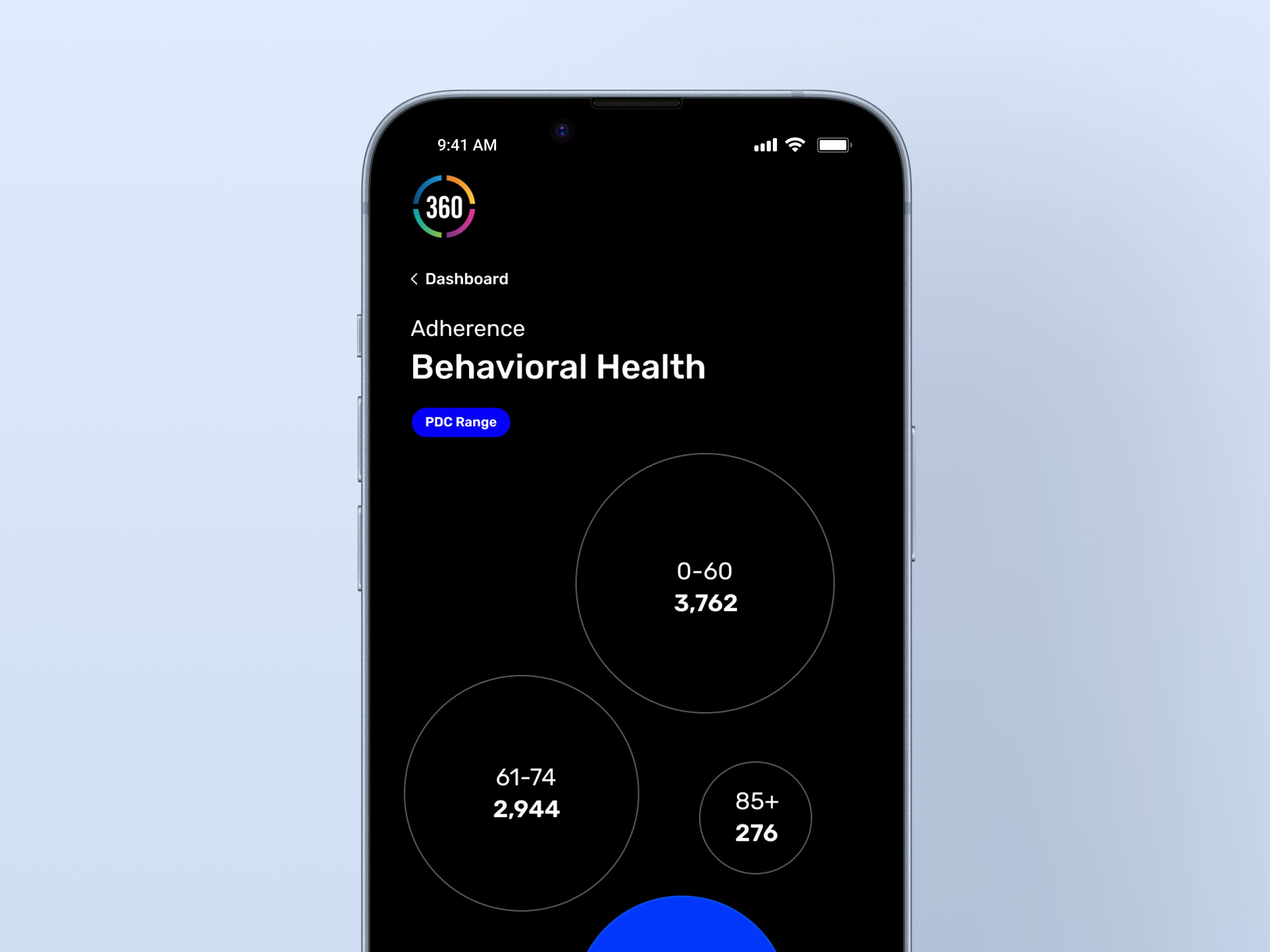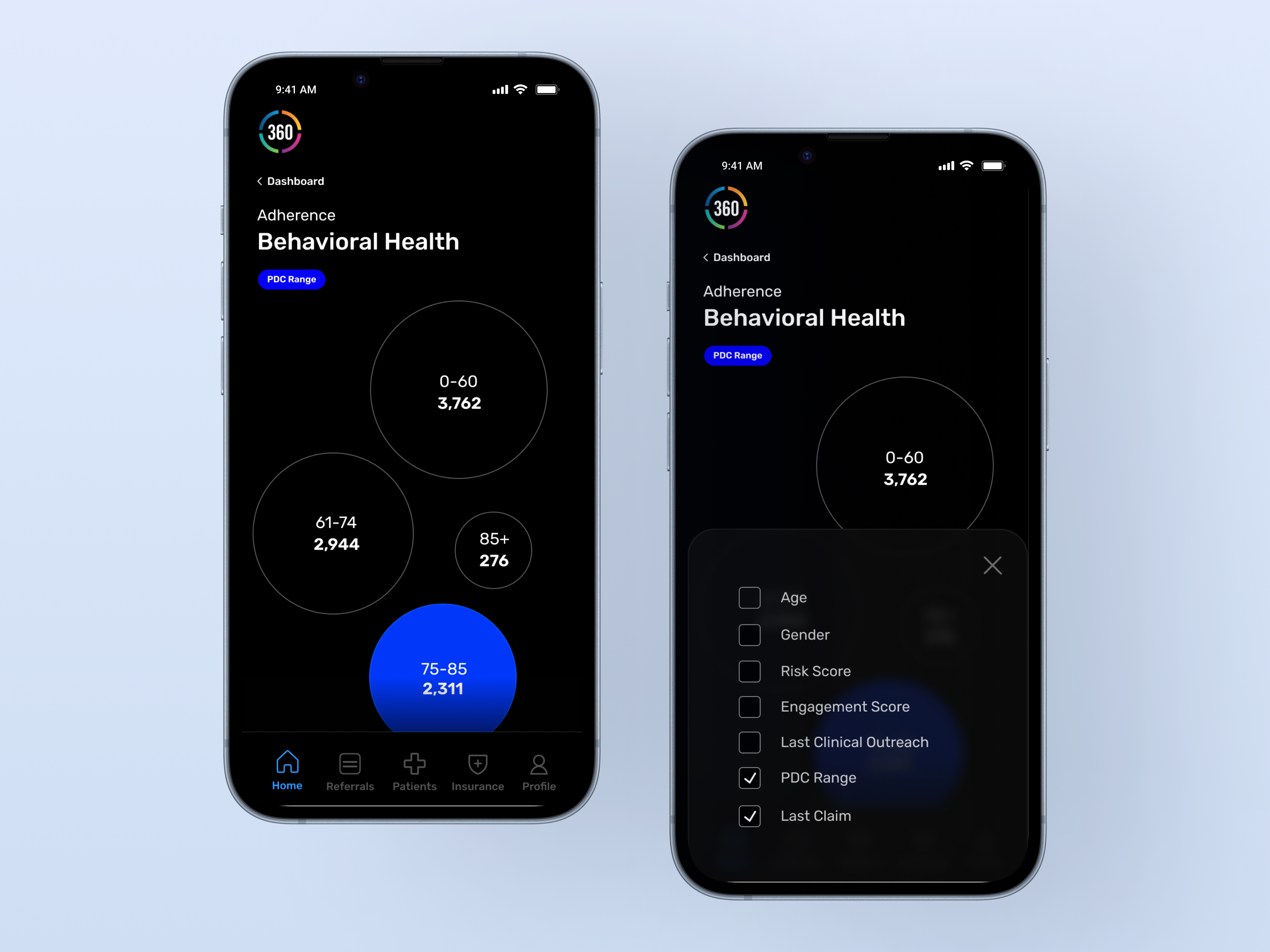0-1 Customer Insights & Definition
We need better healthcare coordination. Even with a wide range of clinical and patient engagement options, it's difficult to determine which approaches work best for each patient. So there was high demand for a product that delivered and gave insights to PHMs or Population Health Managers. This product would soon give the ability and data needed to help patients get the help they need.
I partnered with a Product manager, Project Manager, Senior Designer and Researcher to uncover insights and translate concepts into features that address client behaviours and motivations.